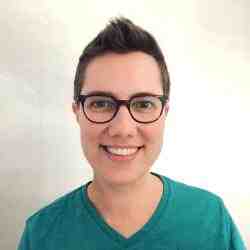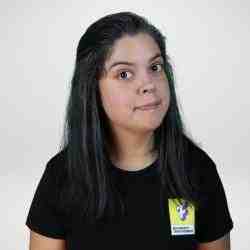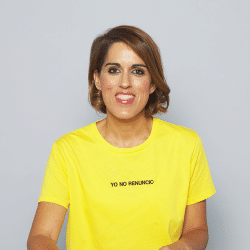Introdução
Dennis Lennartsson is elevating sign language to serve a richer purpose in society by addressing the needs of individuals and communities across geographies and sectors.
A nova ideia
Although multiple sign languages and sign language dictionaries have long existed, Dennis envisions a world in which these tools are newly accessible to a larger number of sign language users globally. Through the European Sign Language Center (ESLC), Dennis responds to the lack of a vital enterprise that can serve, connect, and expand the number of sign language users. Dennis together with other staff members created an organization in which every sign language user has the tools needed to learn to read and write, changing the face of sign language by making it accessible, free for all, and legitimized as a language. They remove the barrier to learning by mobilizing deaf organizations and universities in two-dozen countries to improve interactions across and within different sign languages.
The ESLC team has created several products and services, including the ESLC Spread the Sign online dictionary of over 100,000 signs from 24 countries, a phone application, eLearning platforms, an international network of deaf organizations and universities, and a text-to-sign tool to transform comprehension for the illiterate deaf. They are building a new generation of people who understand the relevance of sign language as a resource for society. Not only has the ESLC enabled improved communication among the deaf, it also serves as a powerful purpose for family members, teachers, the public sector, universities, and citizen organizations (COs) who now have the tools to learn and teach sign language, as well as to integrate sign language into existing social norms. ESLC is a non-profit organization that meets the deaf and the hearing world where they are, using creative and simple methods to spread the powerful possibilities that sign language offers.
O problema
Because there is no universal sign language, several sign languages exist, and vary by country and region. Due to this variance, there exists a need for a unifying strategy to ensure access to sign languages from around the world through a highly accurate and international sign language portal. Without such a portal, the incorporation and sharing of words, terms, and expressions across sign languages is near impossible. This type of platform is also critical for increasing the global status of sign language as a viable form of communication. With increased access to sign translation across languages, more people can learn, be influenced by sign language, and recognize its wide array of applications beyond being a tool for the deaf to communicate.
Today, learning new sign languages is expensive and is often taught through books, CDs, or classes that are rarely individualized or specialized in their content. Free and open access to new sign languages expands vocabulary in a national sign language, particularly in sign languages that lack sufficient signs. For many fields of work, specialized and individualized learning of sign language is critical for refining communication with key target groups. For example, public sector workers in unemployment or disability offices as well as grade school teachers frequently need to communicate with deaf clients or students. In addition, ear, nose and throat doctors and other medical professionals, as well as interpreters who want to learn new sign languages, are in need of a tool for individualized learning and language maintenance. In fact, mastery of American Sign Language (ASL) has become increasingly important for interpreters to remain competitive in the job market, similar to the way in which English as a spoken language serves this purpose.
The prevalence of illiteracy among the deaf is a growing concern that prevents sign language users from integrating fully in society. Of the 70 million deaf people globally, 80 percent are not able to read or write. 500 million people learn and communicate through signs, including the deaf and hard of hearing, as well as their family members. Due to limited existing methods of teaching deaf children to read and write, as well as poor funding to support these efforts, parents and family members are often denied the tools needed to engage with their loved ones. In addition, insufficient education for sign language users in much of the developing world contributes to the illiteracy and exclusion from school and social activities for many young people. Education and communication for deaf children in their mother tongue are human rights that are too often denied. Learning one’s own mother tongue is fundamental to a good education in order to live and work on equal terms in a global community.
A estratégia
The European Sign Language Centre has grown into a globally-integrated resource for sign language. The ESLC combines a global platform of signs, a network of local partners in 24 countries, eLearning platforms, and a text-to-sign tool, all of which fosters the social inclusion of the illiterate and the deaf as full citizens.
One part of the ESLC model is the Spread the Sign online platform, which opens access to various sign languages through a database of sign languages from 24 countries. Spread the Sign has quickly become the solution to the lack of a globally integrated strategy for sign languages through its simple and scalable model. Dennis’s vision is that this platform will constantly evolve just as the users of sign language and the sign languages themselves, and it will continue to be applicable and relevant to a wide range of contexts. It has linguistic applications, as it is a tool to expand vocabulary in a national sign language. This is particularly true in countries where the national sign language is not systematically collected or presented. In a pedagogical context, comparisons of signs from different countries through Spread the Sign creates and improves reflections about what a language is, how languages are constructed, and how to distinguish between language and communication. In many countries that lack material for teaching sign language, Spread the Sign offers creative possibilities to personalize sign language lessons for all education levels.
Spread the Sign is a collective enterprise that incorporates the work of local partners from 24 countries around the world. These partners include universities and deaf organizations that have an interest in taking part in this movement. Rather than the expensive two-year process that it took in the past to record an entire sign language, Spread the Sign works with these partners in their studio in Sweden to record an entire country’s sign language—on average 10,000 signs—in only two weeks. The only cost of this effort is the flight to Sweden, which is either covered by the ESLC or often by the local partners who are able to secure funding from local entities such as their ministries of education. Partners feel an incentive to take part because doing so improves access to languages for their local communities. In addition, the tool then becomes a resource in their respective organizations, university settings, and home countries. Once this language content is created, proofread and checked thoroughly for quality, the content goes live on the Spread the Sign e-learning platform and is free for all users. The local partner organization or university continuously edits the content as the local language changes.
Since the launch of the ESLC in 2009, Spread the Sign is available in 24 different sign languages. Each week the ESLC receives proposals from new universities, organizations, interpreters, linguists, government agencies, and individuals who wish to collaborate, record their national sign language, and contribute to a more accessible world for the deaf. The ESLC has also created a phone application that makes the content from Spread the Sign mobile. This application is particularly useful for interpreters, teachers, and parents who are able to teach themselves sign language and look up words quickly. ESLC continues to reduce the barriers for use of this tool, creating more ways to simplify and open access to its content. For example, Wikipedia has recently approached Dennis to use Spread the Sign content for every Wikipedia page in Sweden to complement the written text.
The ESLC has also developed e-learning platforms for particular fields that need access to clusters of signs to interact with their clients, such as medical professionals who need to learn the most commonly used medical signs. The e-learning platforms create an interactive learning space to ensure all sign language users have the tools necessary for full economic citizenship.
Although the majority of countries around the world do not recognize sign language as a minority language, Dennis sees the applications of the e-learning platforms as powerful for all countries. In 2009, Sweden recognized sign language as a minority language, which means that citizens have certain rights when it comes to access to sign language interpreting, but also the public sector has certain responsibilities to ensure this accessibility. Many public agencies fail to fulfill these duties and seek out ways to reduce costs.
Dennis envisions sign language—both signing of letters, words, and entire stories—as a transformative tool for far more than the deaf community. Signing letters, for example, can improve how children with learning disabilities communicate as they learn to speak. Signing can be useful for certain professions such as miners or air traffic controllers who work in noisy environments. In addition, sign language can transform communication between the deaf and public sector employees. Dennis sees the applications for sign language spanning far beyond communication between the deaf or hard of hearing. He uses the term “sign language user” to expand the pool of those who can fit this category.
Since Dennis and the team founded the ESLC in 2009, it coordinates 100+ volunteers in 24 countries, with the majority of their funding coming from the European Union and Swedish foundations. They plan to spread to five African countries, with 100,000 visitors per month in 2014. In the next five years, they aim to have at least 500,000 signs in their database, with establishment in 80 countries.
A pessoa
Dennis has had a passion for creating a world where all people have the right to communicate, dating back to his childhood. Growing up with a hard of hearing brother, Dennis has engaged with the deaf world from a young age. He grew up in Örebro, Sweden, a city with a large deaf population. In fact, the second most common language after Swedish in Örebro is sign language. Dennis’s parents hosted foster children in their home who attended the national school for the deaf and hard of hearing in Örebro. After immersion in the deaf world during childhood, Dennis continued to grow his interest in and knowledge of the language and culture. After finishing high school, Dennis studied sign language for five years to become an interpreter.
Continuing to follow his passion for all forms of communication, he applied to photography school and launched an advertising agency that he ran and grew over the course of several years. Throughout his experience in the advertising industry, he kept one foot in the deaf world—volunteering as an interpreter and remaining connected with his deaf friends, colleagues, and family. In 1994, a ferry from Estonia to Sweden sank in the Baltic Sea, killing hundreds of people, including many Swedes. One deaf organization in Sweden lost its entire interpreting staff to this tragedy. Dennis stepped in as an interpreter for the organization and to this day remains a point person for two hard of hearing individuals that he connected with through this experience.
After nearly a decade as an entrepreneur in the communications and advertising field, Dennis felt the need to return to his work with sign language full-time—and in a bigger way, in order to impact more people. In 2005 Spread the Sign was launched as a dictionary of signs from around the world. In 2009 Dennis was part of founding the European Sign Language Center, initial impact of the dictionary. When the team launched the European Sign Language Center, they convened Her Majesty the Queen of Sweden along with the Ministry of Education, Ministry of Culture, nine ambassadors of the project, and the European media to create new knowledge and awareness of this work. Also in 2009, Dennis completed a study of his daughter’s class which reminded him just how powerful using signs are in improving children’s reading and writing ability. The diverse applications of sign language for both the deaf and hearing world fueled him. In 2011 Dennis convened a symposium called “Accessing Society” at the Swedish Parliament, which focused on Sweden’s role as a global sign language leader and the power of web-based tools like Spread the Sign.
Dennis’s goal in establishing the ESLC was to broaden the mission based on the early content of Spread the Sign and systematically spread the vision underlying it. He envisions Spread the Sign as an ever- evolving platform that is a critical tool to enable deaf people to learn languages across geographic borders. Dennis also sees sign language as the means in which to improve learning and connection between individuals and governments, families, and the employment market. Spread the Sign is one component of Dennis’s bigger strategy. For Dennis, the ESLC is an engine catalyzing the bigger change he wishes to see across the world—change that is characterized by access to knowledge, tools for literacy, buy-in from policymakers, and new possibilities of exchange between people and institutions. Dennis sees the tools and resources for sign language, which are plentiful in Sweden, as a resource for the entire world, and particularly in developing countries. In fact, in the small Swedish city where Dennis was born, there are more sign language interpreters than in the entire country of India. He is dedicated to building a future characterized by more resources and accessible opportunities for sign language users in countries around the world.




